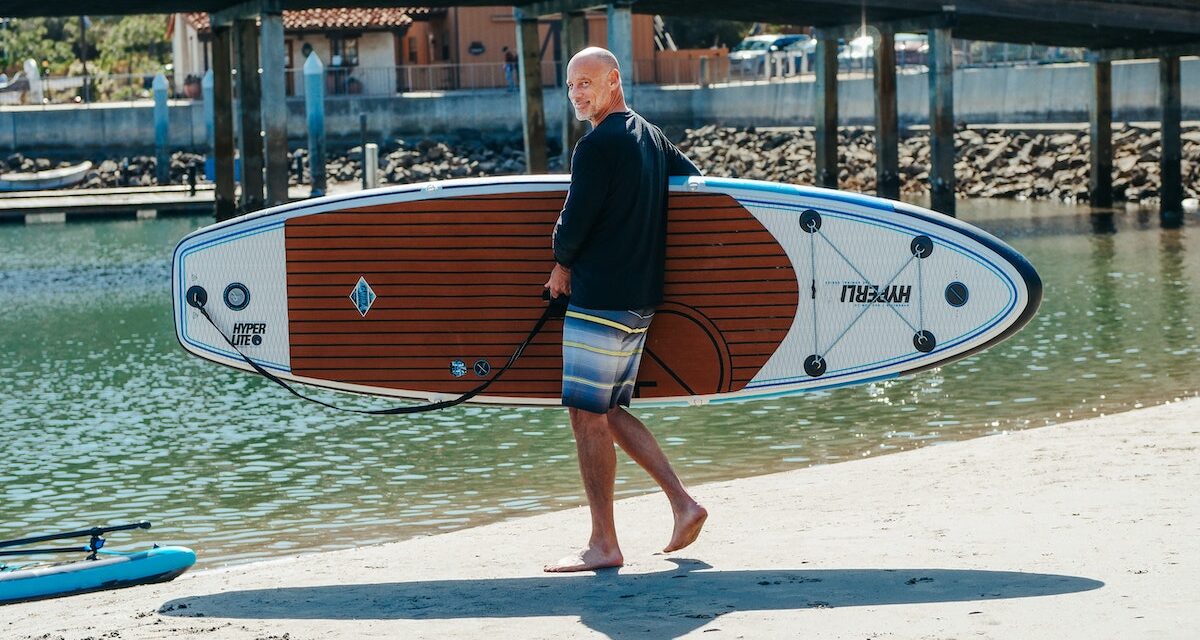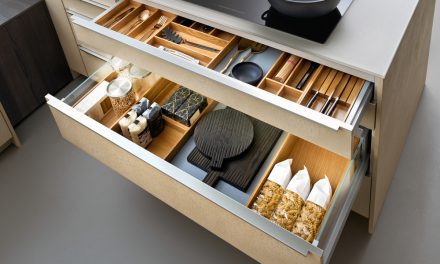There’s nothing better than hitting the open water with a paddle board. Many people discover this after renting one at a beach and decide to buy their own.
While owning a paddle board is fun and rewarding, storing equipment that size can pose a challenge. Thankfully, we’ve put together this guide to paddle board storage so you can focus on your beach time!
Paddle Board Basics
Paddle boards—also called SUPs (Stand Up Paddleboards)—are large, surfboard-like rafts. A rider stands on the board, steering and propelling it with a long paddle.
Whether you use them for yoga, fishing, or cruising around the water, paddle boards have become a mainstay at lakes and beaches worldwide. There’s a paddle board out there for everyone, too—you’ll find standard fiberglass boards, inexpensive foam ones, and even inflatable options.
Your typical paddle board is around ten feet long and three feet wide—that’s a pretty big item to store! And keep in mind that you’ll be storing more than the board. Other gear to be stowed away includes the paddle, a life jacket, and any special clothing you might wear out on the water.
Before You Store Your Paddle Board
It’s essential to keep your paddle board in tip-top shape, and that includes preparing it for storage—especially if you’ll be putting it away for a few months. Consider incorporating these steps into your paddle board storage routine:
- Clean it – You’ll want to rinse your board before you store it to remove any sand, dirt, or salt, as these can damage your board in the long run. Plus, your board will be nice and clean the next time you head for the water!
- Dry it – After cleaning, be sure to completely dry your paddle board with a soft towel, as excess moisture can lead to mold.
- Cover it – If you have a cover for your paddle board and you won’t be hitting the beach soon, put it on. Protective covers shield your board from UV rays, moisture, dust, and critters.
Where to Store Paddle Boards
While indoor storage is best for year-round protection, it may not be practical for everyone. Let’s look at some potential storage locations for your paddle board.
In Your Home
Keeping your board in your home makes it easily accessible and protects it from sunlight and moisture. Some paddlers even showcase their board as a piece of art in the room—it’s undoubtedly a terrific conversation starter!
In a Garage or Shed
If you want to stow your board indoors but don’t want it in your house, this may be the best choice for you. A garage or a shed combines all of the benefits of in-home storage without taking up valuable real estate.
In Your Yard
When space in the home is a little tight and you don’t have a garage, outdoor storage works in a pinch. The most important part of outdoor paddle board storage is protection from the elements. Store your board beneath a deck or an overhanging roof to shield it from the sun and rain. And if you’ll be storing your board outdoors long term, investing in a protective cover is a smart move.
How to Store Stand Up Paddle Board
Now that you’ve figured out where you’ll store your board, it’s time to talk about how to store paddle boards. Depending on your living situation and your preferences, there are a few options.
Rack it
Some racks stand unsupported; others mount to the wall. Regardless of the one you choose (or build for yourself), a rack is an excellent way to store a paddle board. Keeping the board away from the ground avoids any mishaps involving pets or kids.
Look for a rack with padding and straps, as these will protect your board from scratches and keep it secure. Always rack the board on its top or its edges, as the bottom (or hull) is most prone to unwanted damage.
Hang it
Many paddle board enthusiasts suspend their boards from the ceiling. You can either buy a suspension system or use wide straps to hang the board from the rafters. Once again, keeping the board off the ground is a plus.
Lean it
Sometimes, simpler is better. Leaning your board against a wall is a practical and effective way to store it. You can rest a paddle board on its tail or its sides (but never the nose), ideally with some light padding beneath it.
If the wall supporting your paddle board is in a high traffic area, consider using wall pegs or tying it down so you don’t knock it over. Leaning it in a corner also prevents this.
Storing Inflatable Paddle Boards
Wondering how to store an inflatable paddle board? For best results, leave it partially inflated to avoid creasing, and keep it on a rack or suspend it like you would with a regular board.
If you don’t have the room, you can fully deflate the board for compact storage. Just be sure it’s clean and dry beforehand, leave the valve open, and don’t compress it too tightly.
Price Self Storage, Your Paddle Board Storage Solution
Realistically, space is a valuable commodity, and a large paddle board can take up a lot of it. That’s where self storage becomes a smart choice, especially for the apartment-dwelling paddler.
A storage unit allows you to store your beloved paddle board indoors—without worrying about space. With convenient access hours and several locations near the beach, Price Self Storage is here to be your partner in paddle board storage. Need storage by the beach? Check out Pacific Beach or Solana Beach locations and give us a call today!
Sources:
REI. Stand Up Paddle Boarding (SUP) Basics. https://www.rei.com/learn/expert-advice/paddleboarding.html?series=stand-up-paddle-boarding-sup-for-beginners










